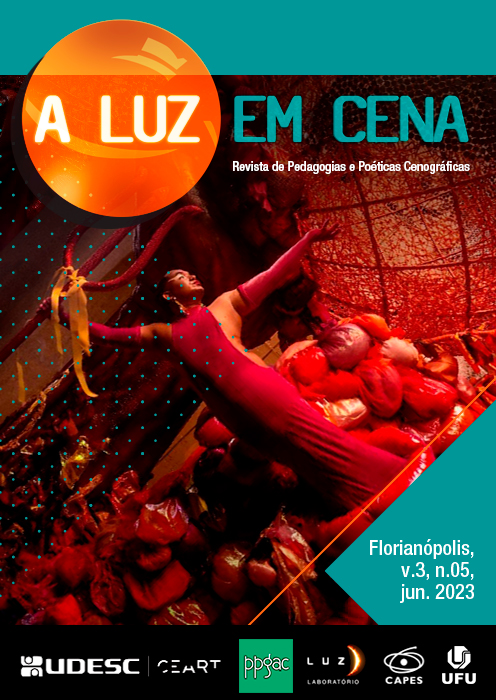Rafael BQueer: a “cor neon” como lugar de passagem, a potência que hackeia o caos
DOI:
https://doi.org/10.5965/27644669030520230801Palavras-chave:
entrevista, Rafael BQueer, performance, arte drag, figurino, LGBTQIAP , LGBTResumo
Multiartista que representa a diversidade da cena cultural lgbtqiap+, Rafael BQueer, natural de Belém, no Pará, é um nome importante para o pensamento brasileiro contemporâneo da arte Drag e de uma forma de performance que se utiliza da confecção e do uso de figurinos provocativos e desestabilizadores. Tendo participado de mostras em espaços institucionais como o MASP e o MAR e realizado residências artísticas em Nova York e Salvador, BQueer transita, com muita plasticidade, entre as artes visuais, o cinema, a fotografia, o carnaval e demais linguagens artísticas, levantando debates que giram ao redor de conceitos como gênero, sexualidade, interseccionalidade, decolonialidade, afrofuturismo. Em entrevista para a revista A Luz em Cena, BQueer reflete acerca da sua trajetória artística, da sua “corpa” política dissidente e disruptiva, da sua vivência enquanto “bicha preta amazônida”, no contexto do hoje, enfatizando, para tal, a construção de vestes que expressam a “desuniformização” dos pensamentos e das práticas corporais.
Downloads
Downloads
Publicado
Como Citar
Edição
Seção
Licença
Copyright (c) 2023 Leonardo Augusto Bora

Este trabalho está licenciado sob uma licença Creative Commons Attribution 4.0 International License.



